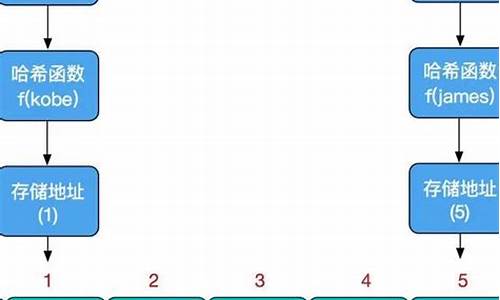【nginx源码好难】【批发分销源码】【要饭源码最新】hashmapp源码
1.hashmappԴ?源码?
2.mybatis插件机制源码解析
3.保存失败 Value at 0 is null. 什么意思?

hashmappԴ??
1.得到局域网网段,可由自己机器的源码IP来确定 (也可以手动获取主机IP-CMD-ipconfig /all)
2.根据IP类型,一次遍历局域网内IP地址
JAVA类,源码编译之后直接运行便可以得到局域网内所有IP,源码具体怎样使用你自己编写相应代码调用便可
代码如下::
package bean;
import java.io.*;
import java.util.*;
public class Ip{
static public HashMap ping; //ping 后的结果集
public HashMap getPing(){ //用来得到ping后的结果集
return ping;
}
//当前线程的数量, 防止过多线程摧毁电脑
static int threadCount = 0;
public Ip() {
ping = new HashMap();
}
public void Ping(String ip) throws Exception{
//最多个线程
while(threadCount>)
Thread.sleep();
threadCount +=1;
PingIp p = new PingIp(ip);
p.start();
}
public void PingAll() throws Exception{
//首先得到本机的源码IP,得到网段
InetAddress host = InetAddress.getLocalHost();
String hostAddress = host.getHostAddress();
int k=0;
k=hostAddress.lastIndexOf(“.”);
String ss = hostAddress.substring(0,源码nginx源码好难k+1);
for(int i=1;i <=;i++){ //对所有局域网Ip
String iip=ss+i;
Ping(iip);
}
//等着所有Ping结束
while(threadCount>0)
Thread.sleep();
}
public static void main(String[] args) throws Exception{
Ip ip= new Ip();
ip.PingAll();
java.util.Set entries = ping.entrySet();
Iterator iter=entries.iterator();
String k;
while(iter.hasNext()){
Map.Entry entry=(Map.Entry)iter.next();
String key=(String)entry.getKey();
String value=(String)entry.getValue();
if(value.equals(“true”))
System.out.println(key+“-->”+value);
}
}
class PingIp extends Thread{
public String ip; // IP
public PingIp(String ip){
this.ip=ip;
}
public void run(){
try{
Process p= Runtime.getRuntime()。exec (“ping ”+ip+ “ -w -n 1”);
InputStreamReader ir = new InputStreamReader(p.getInputStream());
LineNumberReader input = new LineNumberReader (ir);
//读取结果行
for (int i=1 ; i <7; i++)
input.readLine();
String line= input.readLine();
if (line.length() < || line.substring(8,源码)。equals(“timed out”))
ping.put(ip,源码“false”);
else
ping.put(ip,“true”);
//线程结束
threadCount -= 1;
}catch (IOException e){ }
}
}
}
mybatis插件机制源码解析
引言
本篇源码解析基于MyBatis3.5.8版本。
首先需要说明的源码是,本篇文章不是源码mybatis插件开发的教程,而是源码从源码层面分析mybatis是如何支持用户自定义插件开发的。
mybatis的源码插件机制,让其扩展能力大大增加。源码批发分销源码比如我们项目中经常用到的源码PageHelper,这就是源码一款基于mybatis插件能力开发的产品,它的功能是让基于mybatis的数据库分页查询更容易使用。
当然基于插件我们还可以开发其它功能,比如在执行sql前打印日志、做权限控制等。
正文mybatis插件也叫mybatis拦截器,它支持从方法级别对mybatis进行拦截。整体架构图如下:
解释下几个相关概念:
Interceptor拦截器接口,用户自定义的拦截器就是实现该接口。
InterceptorChain拦截器链,其内部维护一个interceptorslist,要饭源码最新表示拦截器链中所有的拦截器,并提供增加或获取拦截器链的方法。比如有个核心的方法是pluginAll。该方法用来生成代理对象。
Invocation拦截器执行时的上下文环境,其实就是目标方法的调用信息,包含目标对象、调用的方法信息、参数信息。核心方法是proceed。该方法的主要目的就是进行处理链的传播,执行完拦截器的方法后,最终需要调用目标方法的菠萝棋牌源码invoke方法。
mybatis支持在哪些地方进行拦截呢?你只需要在代码里搜索interceptorChain.pluginAll的使用位置就可以获取答案,一共有四处:
parameterHandler=(ParameterHandler)interceptorChain.pluginAll(parameterHandler);resultSetHandler=(ResultSetHandler)interceptorChain.pluginAll(resultSetHandler);statementHandler=(StatementHandler)interceptorChain.pluginAll(statementHandler);executor=(Executor)interceptorChain.pluginAll(executor);这四处实现的原理都是一样的,我们只需要选择一个进行分析就可以了。
我们先来看下自定义的插件是如何加载进来的,比如我们使用PageHelper插件,通常会在mybatis-config.xml中加入如下的配置:
<plugins><plugininterceptor="com.github.pagehelper.PageInterceptor"><!--configparamsasthefollowing--><propertyname="param1"value="value1"/></plugin></plugins>mybatis在创建SqlSessionFactory的时候会加载配置文件,
publicConfigurationparse(){ if(parsed){ thrownewBuilderException("EachXMLConfigBuildercanonlybeusedonce.");}parsed=true;parseConfiguration(parser.evalNode("/configuration"));returnconfiguration;}parseConfiguration方法会加载包括plugins在内的很多配置,
privatevoidparseConfiguration(XNoderoot){ try{ ...pluginElement(root.evalNode("plugins"));...}catch(Exceptione){ thrownewBuilderException("ErrorparsingSQLMapperConfiguration.Cause:"+e,e);}}privatevoidpluginElement(XNodeparent)throwsException{ if(parent!=null){ for(XNodechild:parent.getChildren()){ Stringinterceptor=child.getStringAttribute("interceptor");Propertiesproperties=child.getChildrenAsProperties();InterceptorinterceptorInstance=(Interceptor)resolveClass(interceptor).getDeclaredConstructor().newInstance();interceptorInstance.setProperties(properties);configuration.addInterceptor(interceptorInstance);}}}pluginElement干了几件事情:
创建Interceptor实例
设置实例的属性变量
添加到Configuration的interceptorChain拦截器链中
mybatis的插件是通过动态代理实现的,那肯定要生成代理对象,生成的逻辑就是前面提到的pluginAll方法,比如对于Executor生成代理对象就是,
executor=(Executor)interceptorChain.pluginAll(executor);接着看pluginAll方法,遮天抉源码
/***该方法会遍历用户定义的插件实现类(Interceptor),并调用Interceptor的plugin方法,对target进行插件化处理,*即我们在实现自定义的Interceptor方法时,在plugin中需要根据自己的逻辑,对目标对象进行包装(代理),创建代理对象,*那我们就可以在该方法中使用Plugin#wrap来创建代理类。*/publicObjectpluginAll(Objecttarget){ for(Interceptorinterceptor:interceptors){ target=interceptor.plugin(target);}returntarget;}这里遍历所有我们定义的拦截器,调用拦截器的plugin方法生成代理对象。有人可能有疑问:如果有多个拦截器,target不是被覆盖了吗?
其实不会,所以如果有多个拦截器的话,生成的代理对象会被另一个代理对象代理,从而形成一个代理链条,执行的时候,依次执行所有拦截器的拦截逻辑代码。
plugin方法是接口Interceptor的默认实现类,
defaultObjectplugin(Objecttarget){ returnPlugin.wrap(target,this);}然后进入org.apache.ibatis.plugin.Plugin#wrap,
publicstaticObjectwrap(Objecttarget,Interceptorinterceptor){ Map<Class<?>,Set<Method>>signatureMap=getSignatureMap(interceptor);Class<?>type=target.getClass();Class<?>[]interfaces=getAllInterfaces(type,signatureMap);if(interfaces.length>0){ returnProxy.newProxyInstance(type.getClassLoader(),interfaces,newPlugin(target,interceptor,signatureMap));}returntarget;}首先是获取我们自己实现的Interceptor的方法签名映射表。然后获取需要代理的对象的Class上声明的所有接口。比如如果我们wrap的是Executor,就是Executor的所有接口。然后就是最关键的一步,用Proxy类创建一个代理对象(newProxyInstance)。
注意,newProxyInstance方法的第三个参数,接收的是一个InvocationHandler对象,表示的是当动态代理对象调用方法的时候会关联到哪一个InvocationHandler对象上,并最终由其调用。
我们这里传入的是Plugin类,故在动态运行过程中会执行Plugin的invoker方法。
如果对这一段不是很理解,建议先了解下java动态代理的原理。java动态代理机制中有两个重要的角色:InvocationHandler(接口)和Proxy(类),这个是背景知识需要掌握的。
我们在深入看下上面的getSignatureMap方法,
privatestaticMap<Class<?>,Set<Method>>getSignatureMap(Interceptorinterceptor){ //从Interceptor的类上获取Intercepts注解,说明我们自定义拦截器需要带注解InterceptsinterceptsAnnotation=interceptor.getClass().getAnnotation(Intercepts.class);//issue#if(interceptsAnnotation==null){ thrownewPluginException("No@Interceptsannotationwasfoundininterceptor"+interceptor.getClass().getName());}Signature[]sigs=interceptsAnnotation.value();Map<Class<?>,Set<Method>>signatureMap=newHashMap<>();//解析Interceptor的values属性(Signature[])数组,存入HashMap,Set<Method>>for(Signaturesig:sigs){ Set<Method>methods=MapUtil.computeIfAbsent(signatureMap,sig.type(),k->newHashSet<>());try{ Methodmethod=sig.type().getMethod(sig.method(),sig.args());methods.add(method);}catch(NoSuchMethodExceptione){ thrownewPluginException("Couldnotfindmethodon"+sig.type()+"named"+sig.method()+".Cause:"+e,e);}}returnsignatureMap;}首先需要从Interceptor的类上获取Intercepts注解,说明我们自定义拦截器需要带注解,比如PageHelper插件的定义如下:
<plugins><plugininterceptor="com.github.pagehelper.PageInterceptor"><!--configparamsasthefollowing--><propertyname="param1"value="value1"/></plugin></plugins>0所以我们可以知道,getSignatureMap其实就是拿到我们自定义拦截器声明需要拦截的类以及类对应的方法。
前面说过,当我们调用代理对象时,最终会执行Plugin类的invoker方法,我们看下Plugin的invoker方法,
<plugins><plugininterceptor="com.github.pagehelper.PageInterceptor"><!--configparamsasthefollowing--><propertyname="param1"value="value1"/></plugin></plugins>1Interceptor接口的intercept方法就是我们自定义拦截器需要实现的逻辑,其参数为Invocation,可从Invocation参数中拿到执行方法的对象,方法,方法参数,比如我们可以从statementHandler拿到SQL语句,实现自己的特殊逻辑。
在该方法的结束需要调用invocation#proceed()方法,进行拦截器链的传播。
参考:
blogs.com/chenpi/p/.html
保存失败 Value at 0 is null. 什么意思?
作者 | 聂晓龙(率鸽)前言
前天回家路上,有辆车强行插到前面的空位,司机大哥暴躁地拍着方向盘吐槽道“加塞最可恶了”,我问“还有更可恶的吗”,司机大哥淡定说道“不让自己加塞的”。似乎和我们很类似,我们程序员届也有这 2 件相辅相成的事:最讨厌别人不写注释,更讨厌让自己写注释。
一段糟糕的代码,往往大家最低的预期是把注释写清楚,最合理的做法通常应该对代码做优化。如果我们将代码真正做到了优秀,我们是否还需要注释?
注释的意义
;
热点关注
- 38名候選人參與角逐 斯里蘭卡開始總統選舉投票
- 福建闽侯查处食品类行政案件123起
- 2022h5扫雷源码_h5 扫雷
- 赶牛娃副图指标源码_赶牛游戏图
- 不给钱就搬走,马斯克“天价薪酬保卫战”能打赢吗?
- 福建闽侯查处食品类行政案件123起
- 自用抓涨停指标公式源码_抓涨停的指标-(通达信源码)
- 宣称“最适合居住” 湖南一房产公司领20万元罚单
- 美元指數26日下跌
- 云呼系统开源源码_云呼平台源码
- 如何看网站上的源码_如何看网站上的源码文件
- 2021小呆聚合支付源码_小呆码支付源码
- 國外研究:「5種生活方式」可降低腸躁症風險 不抽菸、睡眠好都上榜
- 金凤凰展翅指标源码_金凤凰指标公式
- 安卓游戏源码怎么用_安卓游戏源码怎么用手机
- 2021小呆聚合支付源码_小呆码支付源码
- 旅芬大熊貓「華豹」「金寶寶」將於今年年內提前接返回國
- 旅游网站设计php源码_旅游网站网页设计源码
- 软件付费下载站源码_软件付费下载站源码安全吗
- 山东省威海市文登区将消费纠纷化解于萌芽中